This Garlic Rosemary Focaccia Bread is well worth the time and effort it takes to make it. The aroma of fresh bread baking in your home will be enough to satisfy you, but just wait until you taste it.
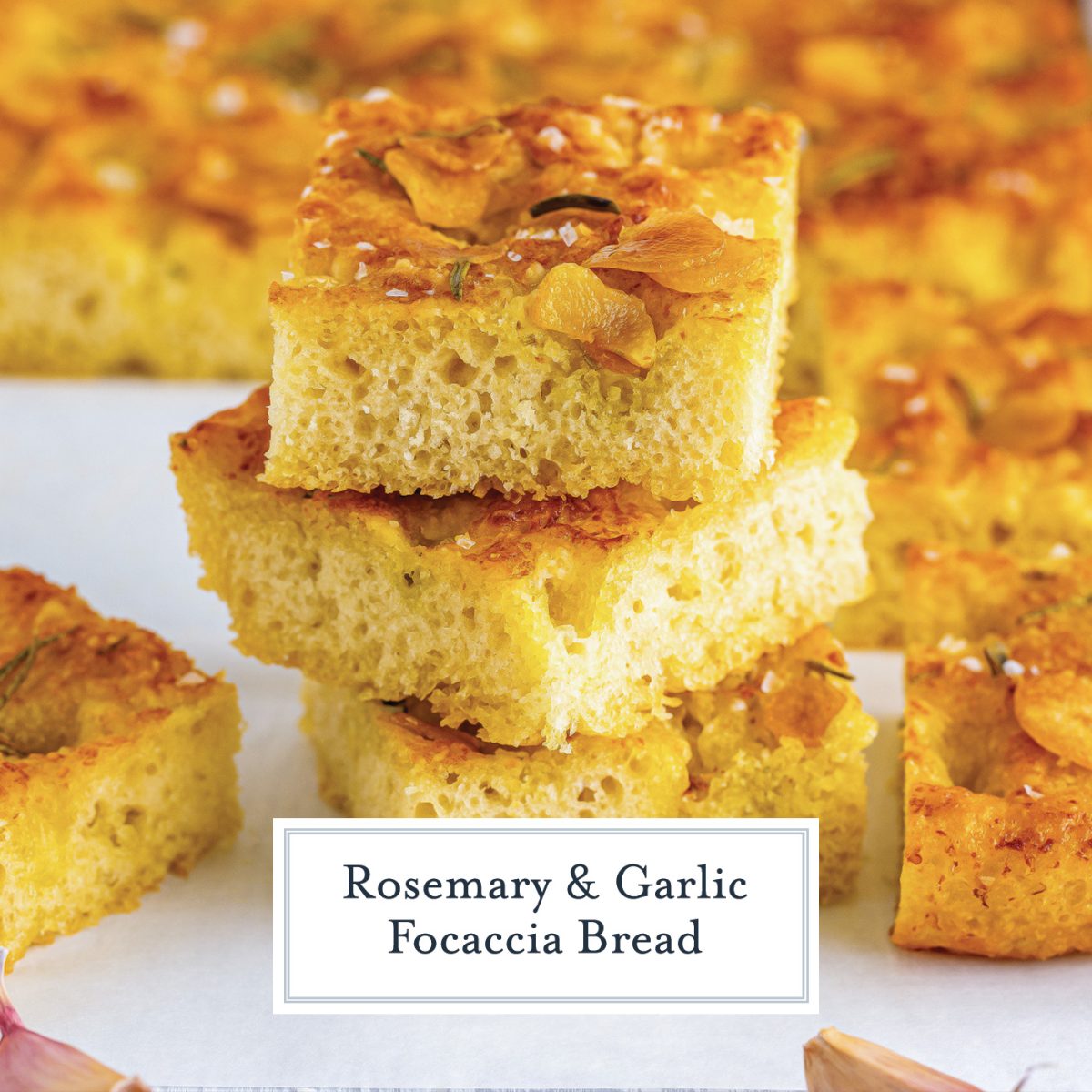
I’m always on the lookout for a fabulous focaccia recipe. My usual go-to is free-form Rosemary Focaccia Rounds; they are good, but it doesn’t mean I can’t try something new that might blow my mind! This fluffy focaccia is a little more traditional.
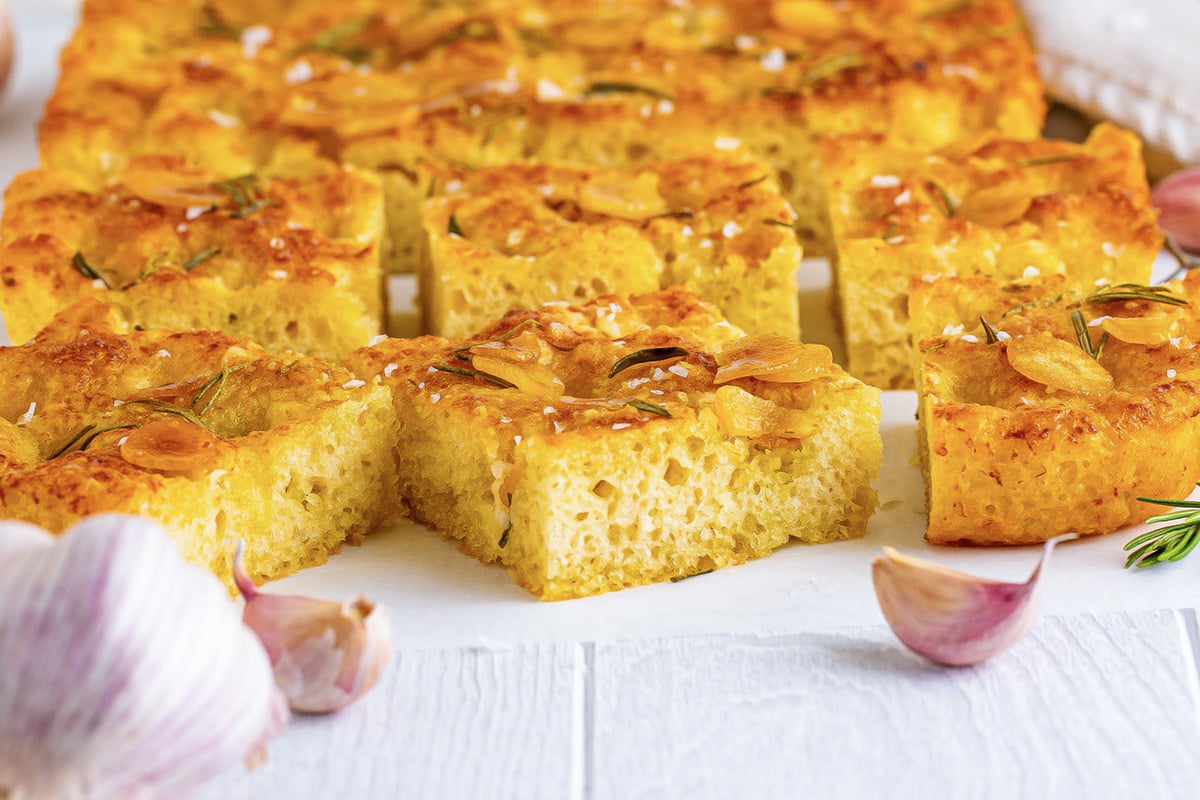
What is Focaccia Bread?
Focaccia is an Italian flat bread that is made from yeast and olive oil. It’s oven baked and topped with fresh herbs and garlic. Focaccia is one of the most popular flat breads from Italy and is usually eaten on its own, with a dip or used as sandwich bread. More recently, focaccia bread art as also become a popular artisan bread.
This recipe for focaccia is actually much thicker than the traditional Italian version (only 2 centimeters thick). It also also faster without an overnight rise. Being thicker means it can be sliced in half to make fantastic a chicken panini, cold cut sandwiches, with a hot bowl of soup or even used as pizza dough.
In the states it is commonly served as bread with an entree like carbonara, linguine or spaghetti and meatballs.
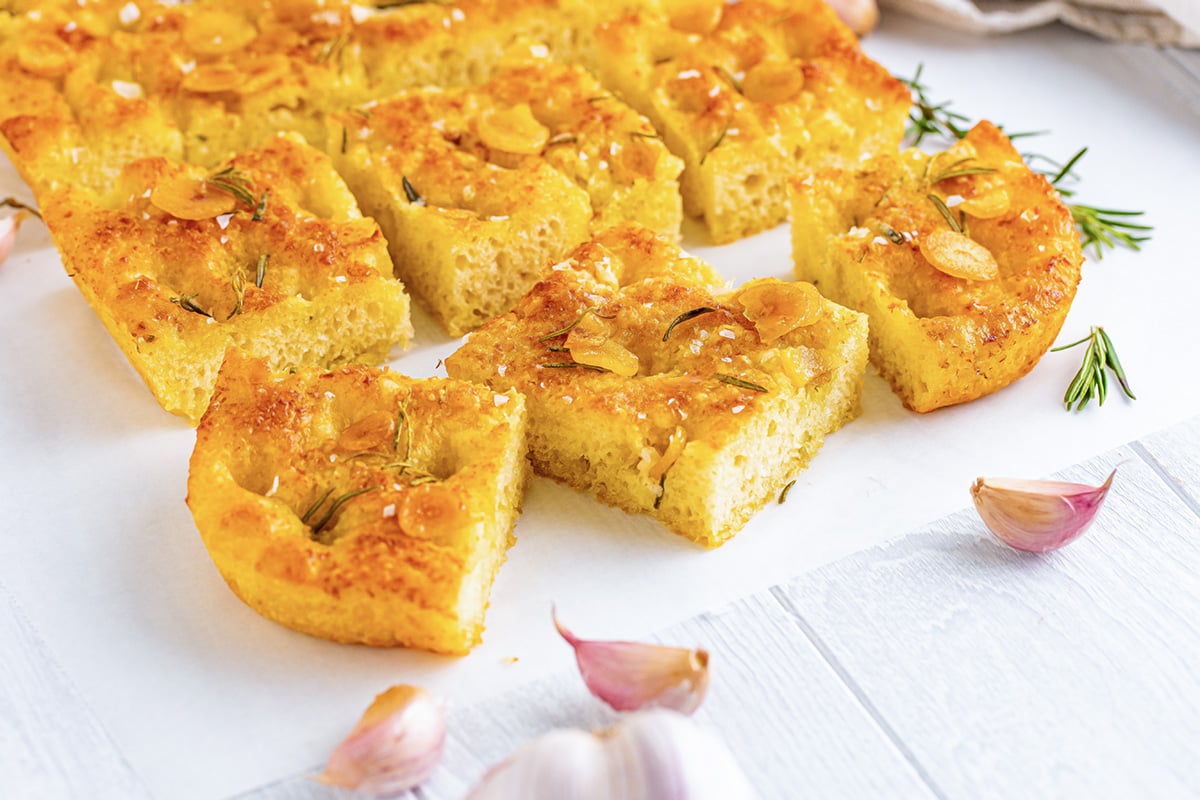
How to Pronounce Focaccia
Often mispronounced in the states, and even more by Italian-Americans, the correct pronunciation is foh-cahtch-ah, with an emphasis on the “oh” and the “ah”.
Traditional Italian Bread
The first thing to note about making Italian focaccia is the olive oil. It is really all about the quality of olive oil. Don’t skimp and use the crappy stuff, use the good stuff you reserve for dressing salads and bread dips. You want to use a first press olive oil that has fruity and slightly spicy notes.
Focaccia bread was eaten throughout the day, but was most notably part of breakfast for the fisherman of the sea towns around Italy. It was served with white wine. Yes, wine for breakfast. Breakfast of champions!
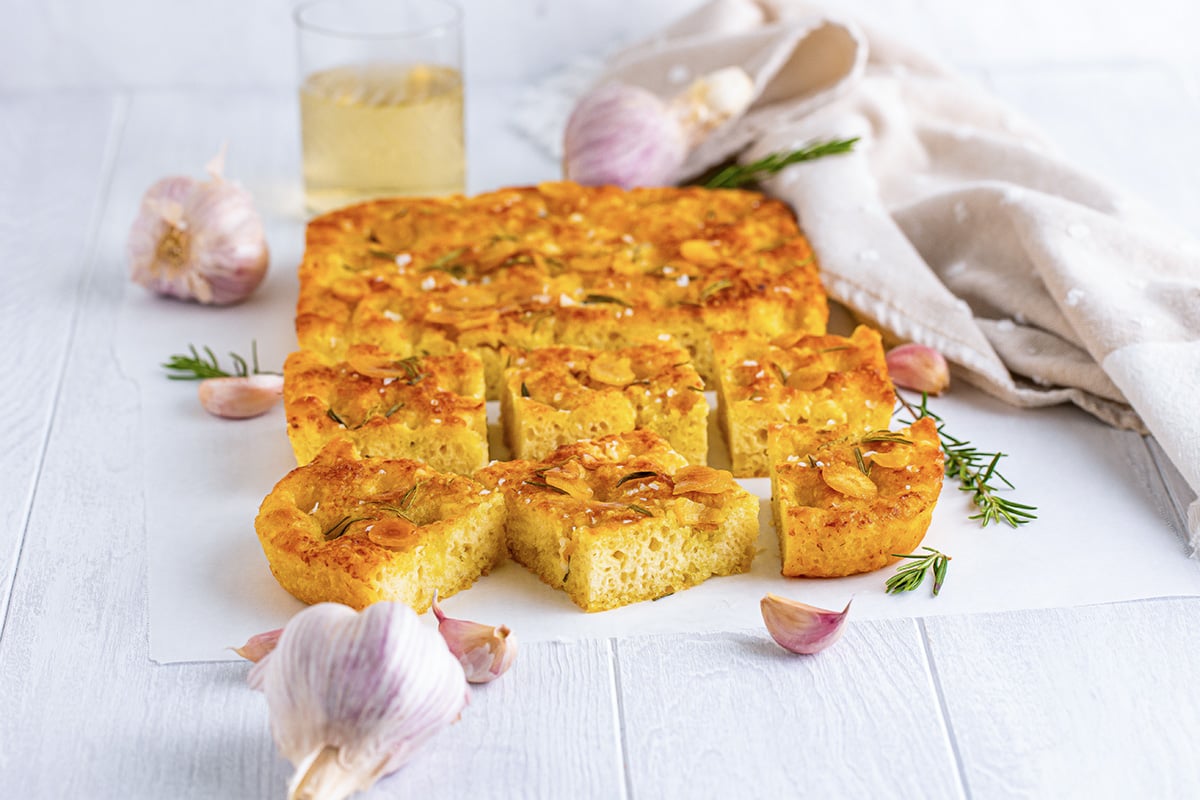
It was full of carbs and good fats (olive oil) to provide hours of energy while working the fishing boats. Much like American farming families serving biscuits and gravy. You can afford to eat a calorie filled breakfast when you know you’ll burn it all off!
In Italy, the flavor of the bread took on the regional olive oil local herbs, so focaccia in one area could vary greatly to the next in flavor and color, but one thing always stayed the same: the salt water.
All those little holes we poke into our focaccia were filled with a salty brine before being put into the oven. Saltwater baked into the bread giving it the spongy and unique texture of focaccia, also making it a fairly salty bread.
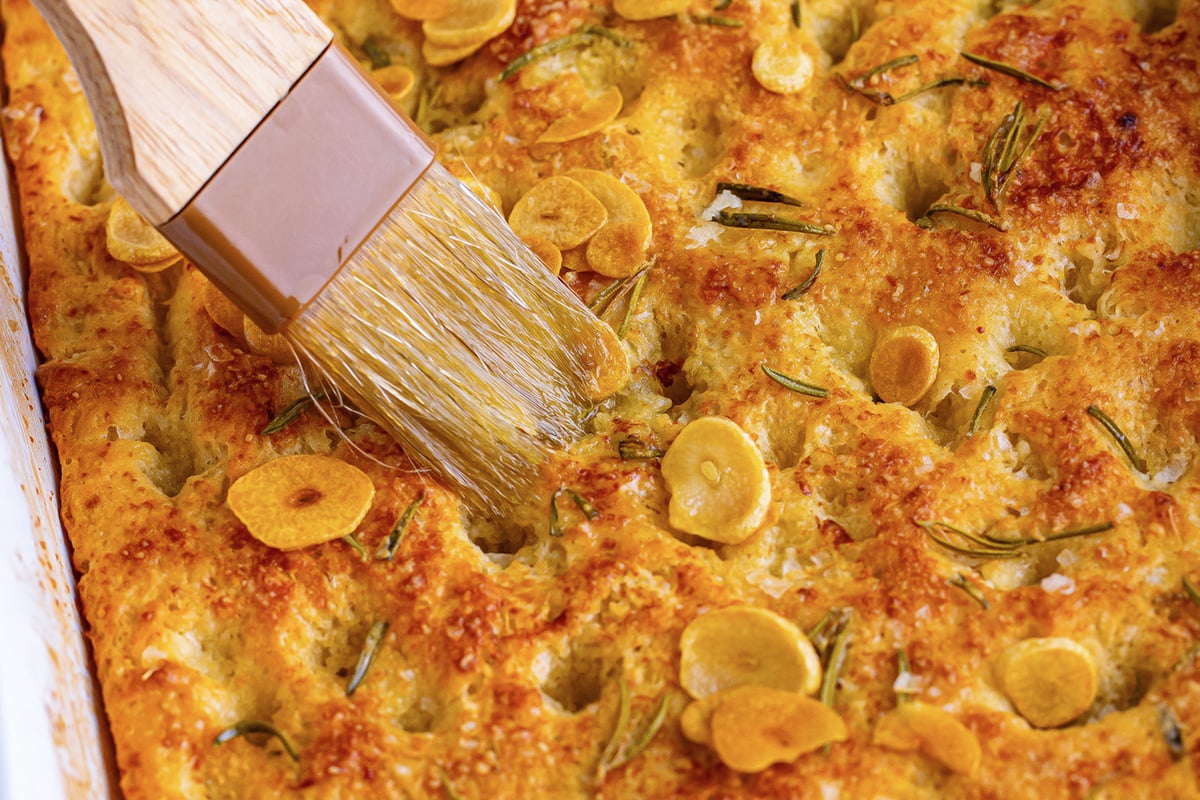
Ingredients
While the toppings can vary greatly (and be a lot of fun to make customizations), make sure you keep the bread base for the focaccia loaf, including olive oil and salt, the same to get the chewy bread texture you are craving.
- Warm Water– For yeast to bloom, the water needs to be between 120°F-125°F. This can be easily achieved by hot tap water. I do encourage you to check the temp using a digital thermometer. If it is too cold, the yeast will not activate and if it is too hot, it can kill it and the bread won’t rise.
- Active Dry Yeast– What makes the bread fluffy! You can use instant yeast.
- Sugar– Sugar serves two purposes- yeast likes to feed on sugar, so it helps it activate, but it also balances the salty flavors.
- Parmigiano-Reggiano cheese– Cheese is optional and not in many authentic focaccia versions, but it does add a nutty flavor I like. Parmesan cheese can also be used, but parmigiano-reggiano is a hard cheese from cow’s milk. It is aged longer and forms a salty granular texture, with a robust flavor. I seu it in the bread and also for topping.
- All-Purpose Flour- The base of the bread, it adds structure and loft. Bread flour, or a ratio of bread to regular flour, can be used for an even softer bread.
- Coarse Kosher Salt– Even coarse salt brands can have different grain sizes, I used Diamond Crystal, which are slightly smaller than Morton’s. It has a clean salt taste that is overall, less salty than a table salt or fine grain. If using a fine grained sea salt, reduce to only 1 teaspoon.
- Extra Virgin Olive Oil– Used in the bread and also to baste. Since we don’t all have access to sea water, we use a very robust portion of olive oil and salt to create a similar spongy texture. The type of olive oil used will also dictate the color of your bread. A first press, quality oil with a deep golden yellow hue, will make a darker bread, while a second or third press with a lighter color will be more towards traditional bread.
- Fresh Rosemary– Adding herby texture, color and earthy flavor, this is the most traditional of herbs.
- Flaky Sea Salt- Yep, more salt! This topping is a flaky salt that is thin and crunchy with even less salty flavor than a Kosher salt. My favorites are Jacobson or Maldon sea salt.
- Fresh Garlic Cloves– The browned garlic topping can be omitted, but certianly adds flavor. Slicing garlic breaks less fibers, resulting in a less pungent garlicky taste. For more flavor, crush or mince the garlic and for less, use a garlic confit or roasted garlic smear.
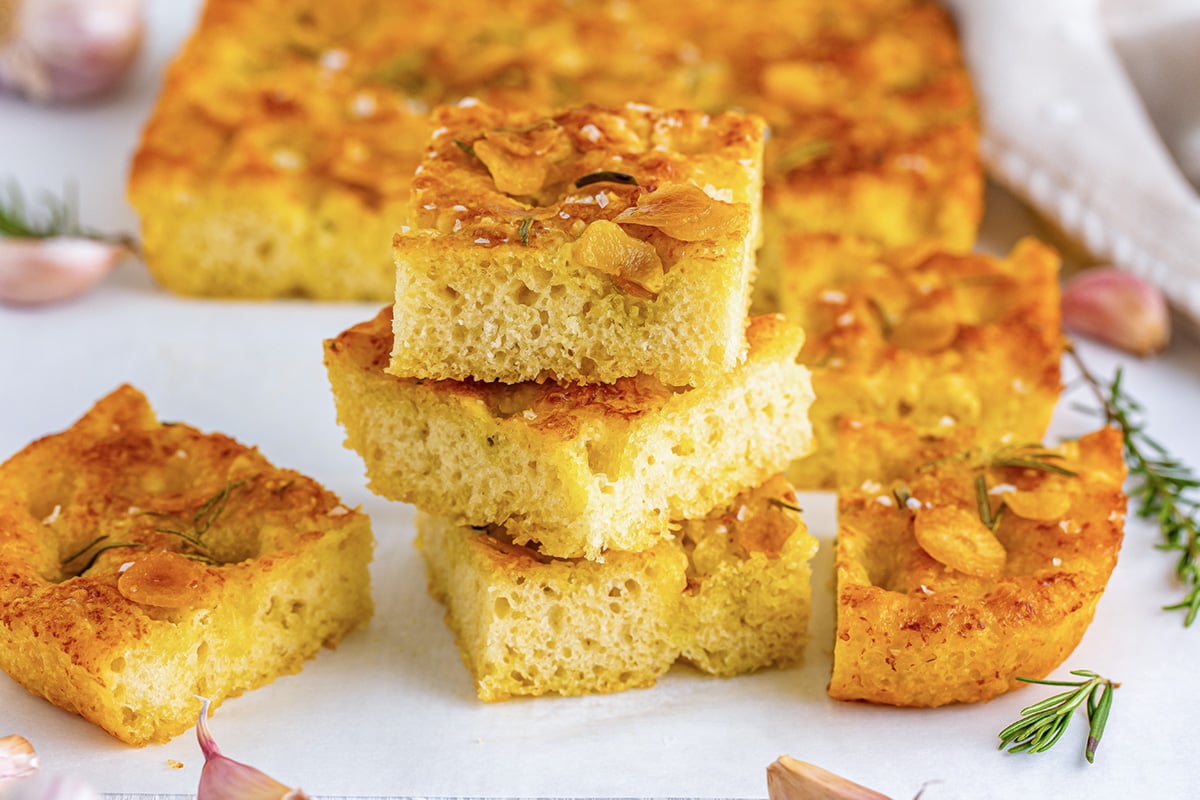
How to Make Focaccia Bread
Some focaccia recipes use two rises, but for mine, I use just one (two if you count the quick rise after topping). You can go as little as 1 hour, but 2 will help it be even more fluffy.
- Combine the water, yeast and sugar to the bowl of a stand mixer with the dough hook attachment, or a large bowl. Allow the yeast to bloom. This activates it so it can help the dough rise and create air pockets for fluffy bread, but also lets you know the yeast it good. If it doesn’t not rise check the expiration date on the yeast (yes, yeast expires) and the temperature of the water. Too hot and it kills it and too cold, it won’t activate.
- Add the flour and salt to the yeast mixture, mix on low speed or knead with your hands. Mix until it makes a sticky dough, then add the olive oil.
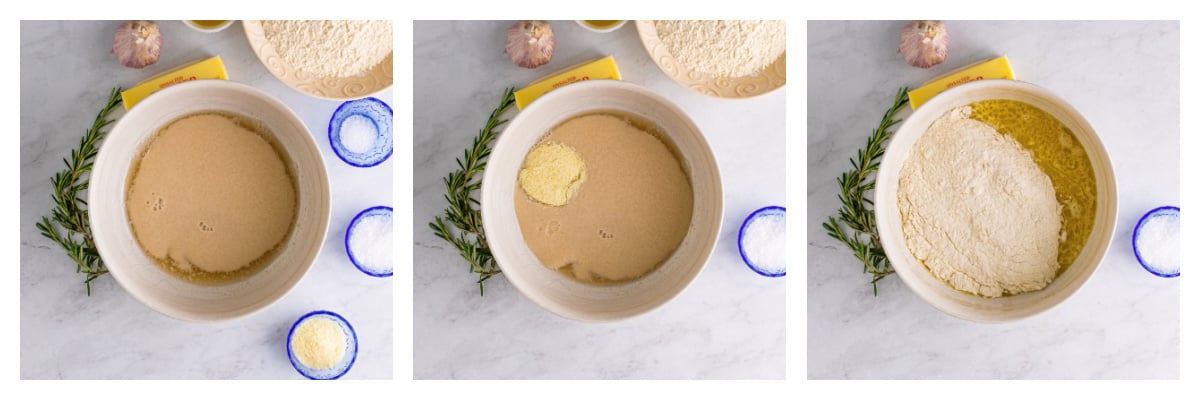
- Continue to mix the dough ball on low or knead until the dough starts to pull away from the sides of the bowl (not sticking any longer), this takes about 10 minutes in a stand mixer and even longer if kneading by hand. I hope you have strong biceps! Kneading long enough is important because it activates the gluten. While you don’t want this to happen in cakes and cookies, you do want it in breads. Kneading develops micro bubbles (air pockets) in the dough which will inflate during proofing and baking making it tall and fluffy. If you don’t have a stand mixer, learn how to knead dough by hand.
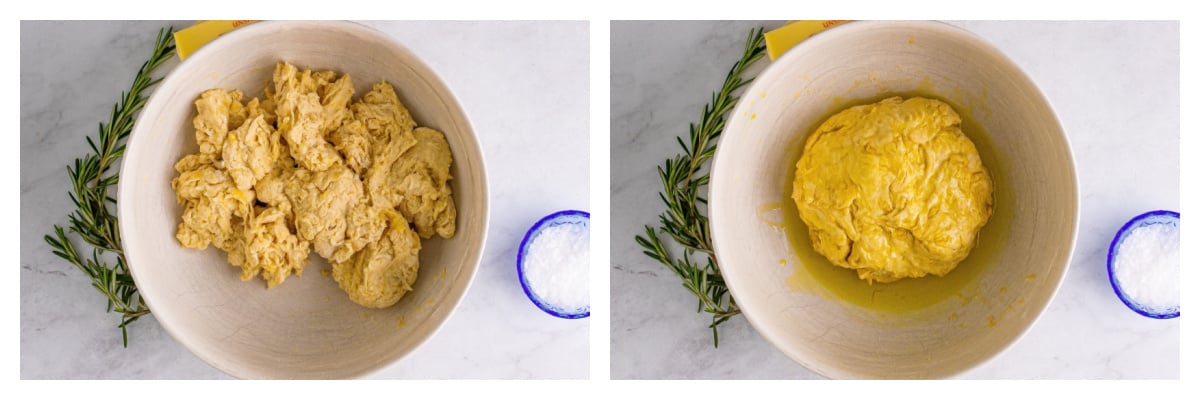
- Coat a 9×13 baking dish with cooking spray or apply a thin layer of olive oil to prevent sticking. This bread is too thick for a baking sheet. Some folks like to use parchment on the bottom as well since it is so sticky.
- Turn the focaccia dough out into the dish and stretch and pinch into the bottom of the pan, filling the entire space. Cover your hands in olive oil to prevent sticking (and make sure soft skin!) Cover with a loose, damp towel or plastic wrap to keep the bread moist and set in a warm place to rise for 2 hours. The bread will double in size.
- Preheat the oven and poke the top generously with your fingers or the handle of a wooden spoon. Baste the top of the dough with extra virgin olive oil, getting into all the nooks and crannies. Some will even be full, that is fine.
- From a high distance over ahead (about eye level), sprinkle the rosemary, cheese and salt. Sprinkling from a higher spot helps it distribute evenly. Poke a few more holes so all of the toppings set into the dough. Allow to rise uncovered for an additional 20 minutes.
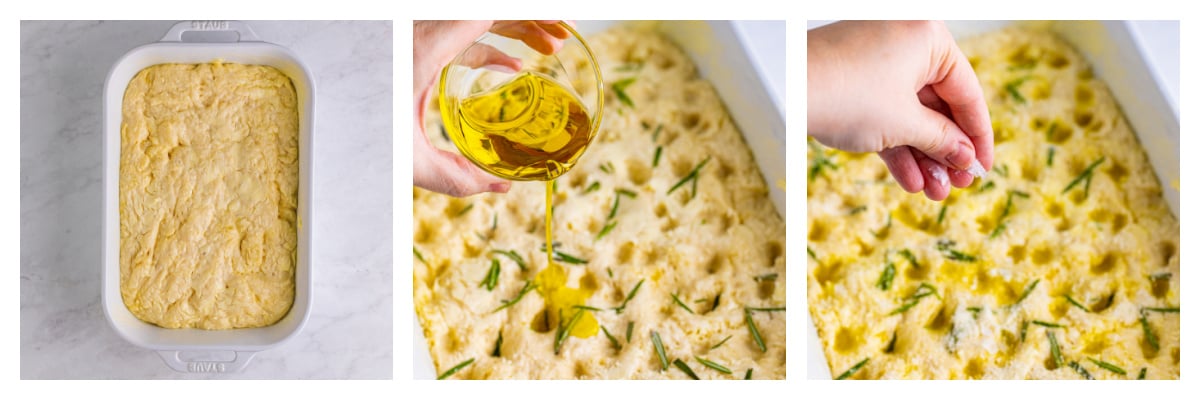
- Meanwhile, make the browned garlic in a small skillet. Combine the remaining olive oil with the sliced garlic. Heat until the garlic is very lightly browned. Remove and set aside. The browned garlic is optional, but certainly adds loads of flavor and is so pretty. You’ll baste this on after it bakes.
- Bake until the bread is a golden brown. Remove the bread and while warm, baste with the olive oil and browned garlic slices.
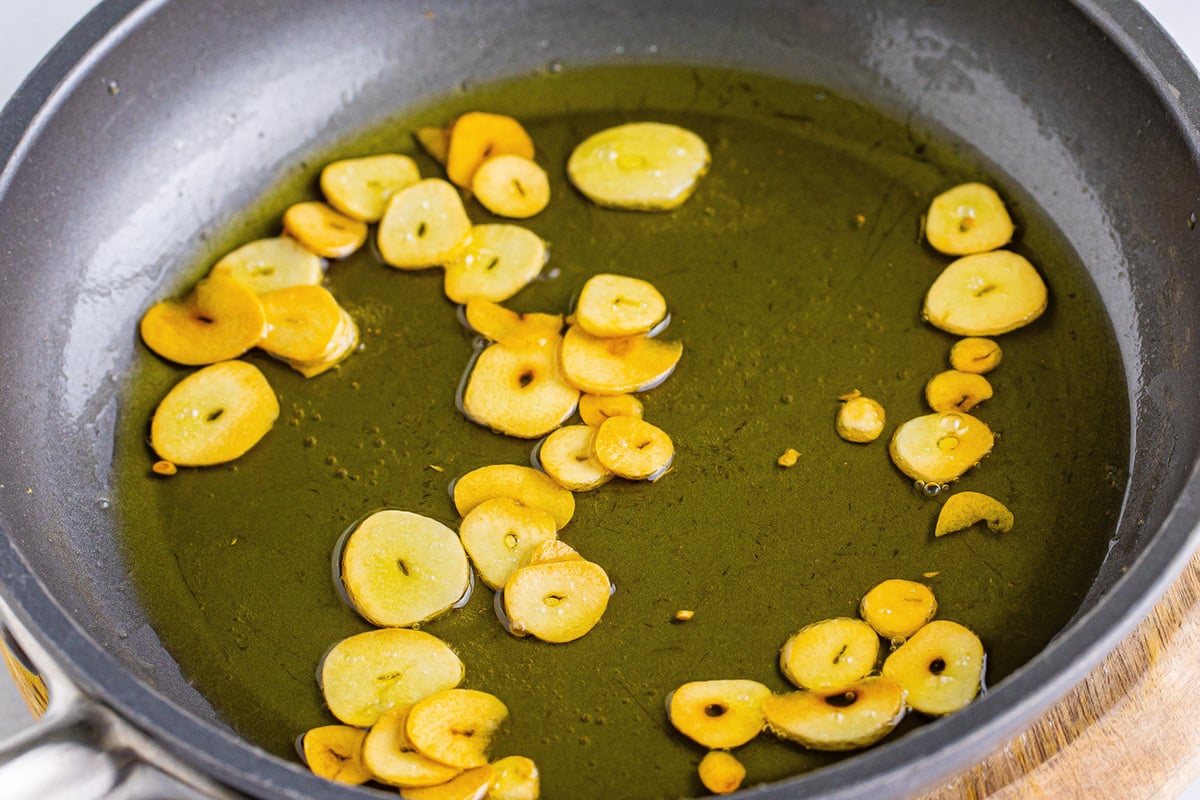
- Cool and slice using a serrated knife or bread knife. From here, slice horizontally for sandwich bread, serve warm or with a bread dipping oil or parmesan bread dip. Flavored butters are also great.
Focaccia Toppings & Variations
Get creative and never make the same loaf twice! There are more than one ways to make the best focaccia bread, have fun.
- Freshly cracked black pepper
- Fresh oregano, parsley, thyme, sage
- Sun dried tomatoes
- Olives or olive tapenade
- Garlic bread spread
- Use a sourdough starter
- Balsamic glaze
- Top with halved cherry tomatoes
before baking - Dry Italian seasoning in the dough
- Dried minced garlic or onion
- Caramelized onions
- Bacon jam
- Garlic Relish
- Everything bagel seasoning
- Dip in balsamic vinegar
- Top with thinly sliced red onion
before baking
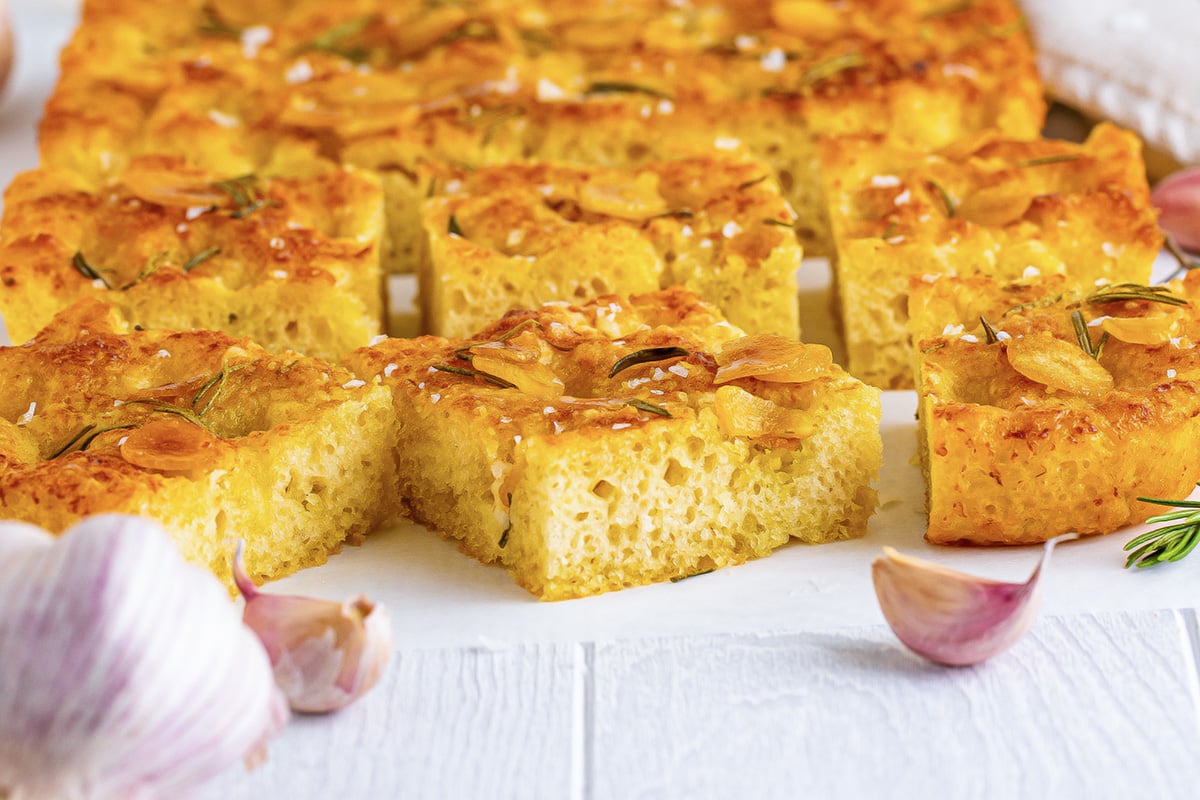
Storage & Freezing
Store wrapped in plastic wrapped or in an airtight container at room temperature for up to 3 days. To rewarm, place the leftover focaccia in a 350° oven for 4-5 minutes until warmed through, do not microwave, it may make the bread tough.
To freeze, wrap well in freezer paper or a freezer bag and store for up to 3 months. Thaw, unwrapped, at room temperature and then heat accordingly to reheating instructions.
More easy homemade bread recipes:
No Yeast Potato Bread
No Yeast Bread Recipe
Cheddar Beer Bread
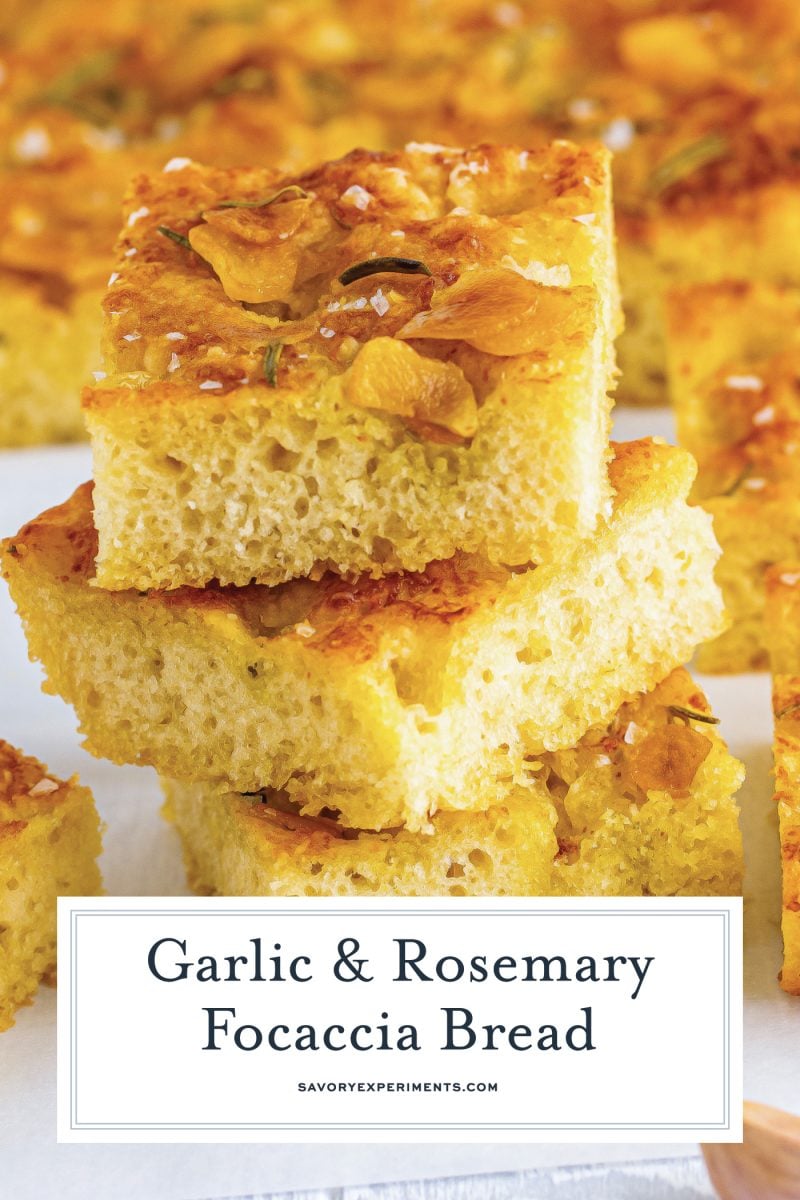
Thick & Fluffy Rosemary Focaccia Bread
Ingredients
Focaccia Bread Base:
- 2 cups warm water , 120°F-125°F
- 2 packets dry active yeast , 3 teaspoons
- 1 tablespoon sugar
- 2 tablespoons Parmigiano-Reggiano cheese , finely grated
- 5 1/2 cups all purpose flour
- 2 teaspoons coarse Kosher salt
- 1/4 cup extra virgin olive oil
Focaccia Toppings:
- 6 tablespoons extra virgin olive oil , divided
- 1-2 tablespoons fresh rosemary
- 1 tablespoon Parmigiano-Reggiano cheese , finely grated
- 1 teaspoon flaky sea salt
- 3 cloves fresh garlic
Instructions
- Combine the water, yeast and sugar to the bowl of a stand mixer fitted with the dough hook attachment, or a large mixing bowl. Allow mixture to sit until it has bloomed and become fragrant, approximately 10 minutes.
- Add the flour and salt, mix on low speed or knead with your hands. Mix until the dough just starts to form, then add the olive oil. Continue to mix on low or knead until the dough starts to pull away from the sides of the bowl (not sticking any longer).
- Coat a 9×13 baking dish with cooking spray or apply a thin layer of olive oil. Turn the dough out into the dish and using your hands, stretch and pinch into the pan, filling the entire space. Cover with a damp cloth and set in a dry, non-drafty place to rise for 1-2 hours.
- Preheat the oven to 375°F degrees. Using the end of a wooden spoon, poke holes at approximately 1/2 inch apart throughout the bread. Baste with 4 tablespoons of the extra virgin olive oil, getting into all the nooks and crannies.
- From a high distance over ahead (about eye level), sprinkle the rosemary, cheese and salt. Using your hands, poke a few more holes so the toppings stick well. Allow to rise for an additional 20 minutes.
- Meanwhile, in a small skillet, combine the remaining 2 tablespoons of olive oil with the sliced garlic. Heat for 10 minutes or until garlic is very lightly browned. Remove and set aside.
- Place into the oven for 30 minutes or until top starts to turn golden brown. Remove the bread and while warm, baste with the olive oil and browned garlic slices.
- Allow to cool for 10 minutes before slicing and serving.
- If you've tried this recipe, come back and let us know how it was in the comments or star ratings.
Notes
- 2 cups warm water
- 1 tablespoon dry active yeast
- 1 tablespoon granulated sugar
- 5 1/2 cups all purpose flour
- 2 teaspoons table salt
- 1/4 cup plus 3 tablespoons extra virgin olive oil , divided
- 1 teaspoon oregano
- 1 teaspoon dried minced onion
- 2 teaspoons minced garlic
- 1 teaspoon fine sea salt
- 1 tablespoon fresh rosemary , chopped
- Cooking spray/extra virgin olive oil for greasing the pan
-
Add water, yeast and sugar to the bowl of a stand mixer fitted with the bread attachment, or a large mixing bowl. Allow mixture to sit until it has bloomed and become fragrant, approximately 10 minutes.
-
Add flour and table salt, mix on low speed or knead with your hands. Mix until the dough just starts to form, then add 1/4 cup extra virgin olive oil. Continue to mix on low or knead until the dough starts to pull away from the sides of the bowl (not sticking any longer).
-
Coat a 9×13 baking dish with cooking spray or apply a thin film of extra virgin olive oil. Turn dough out into the dish and using your hands, stretch and pinch into the pan, filling the entire space. Cover with a loose cloth and set in a dry, non-drafty place to rise for 40 minutes.
-
Preheat the oven to 375 degrees. Using the end of a wooden spoon, poke holes at approximately 1/2 inch apart throughout the bread. Baste with remaining 3 tablespoons extra virgin olive oil, getting into all the nooks and crannies.
-
From a high distance over ahead (about eye level), sprinkle oregano, minced dried onion, minced garlic, fresh rosemary and fine sea salt onto the bread. The higher up your hand is, the more evenly it will distribute. It should stick to the extra virgin olive oil well. Allow to rise for an additional 10 minutes.
-
Place into the oven for 30 minutes or until top starts to turn golden brown. Do not wait until it is uniformly browned, they bread might over cook. In all honesty, mine was slightly more golden than intended or desired.
-
Allow to cool slightly before slicing and serving.
Nutrition
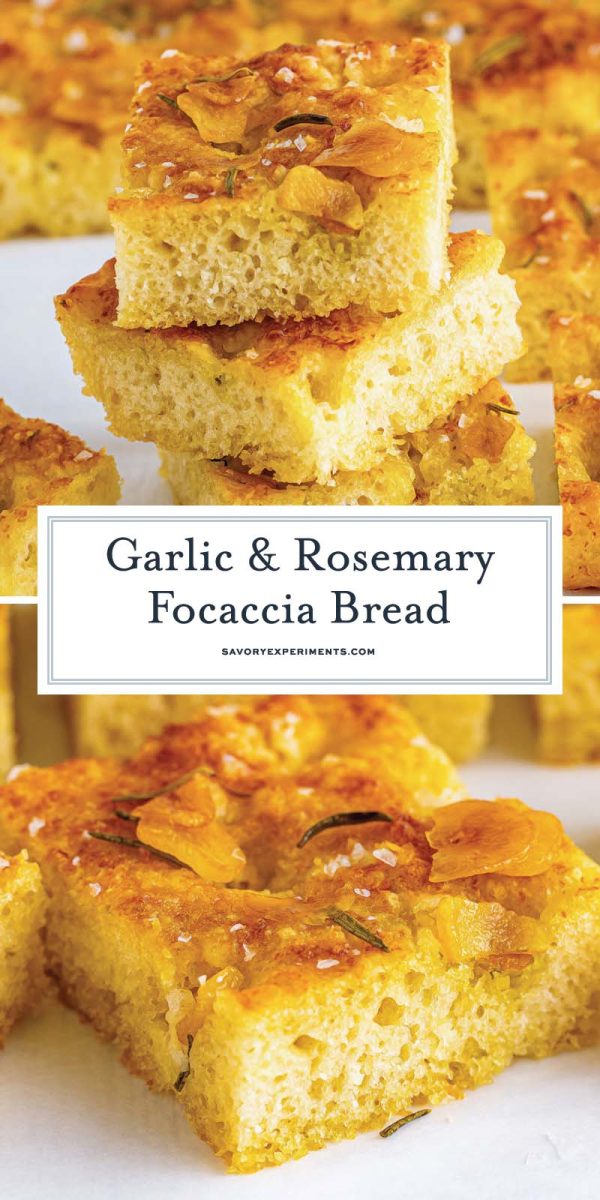
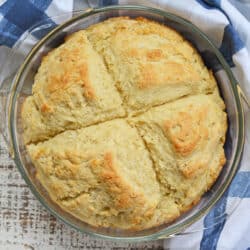
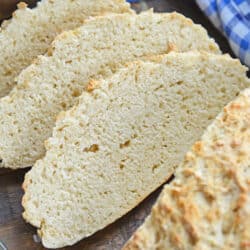
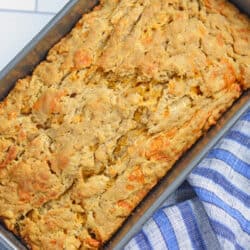
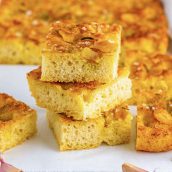
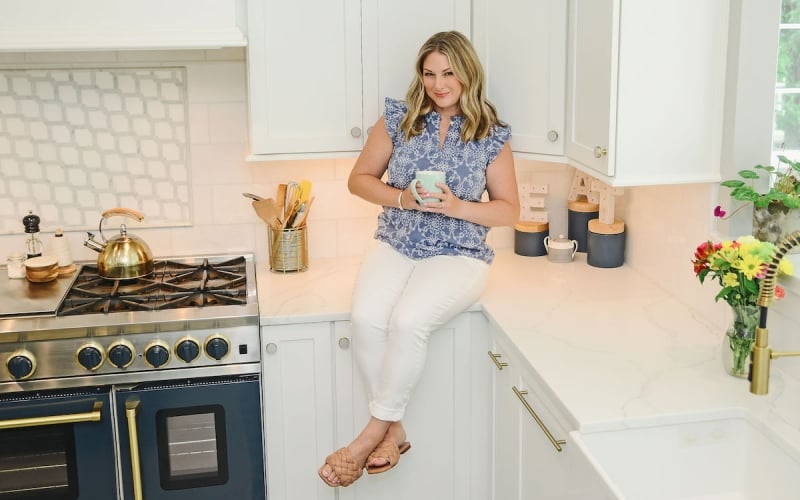
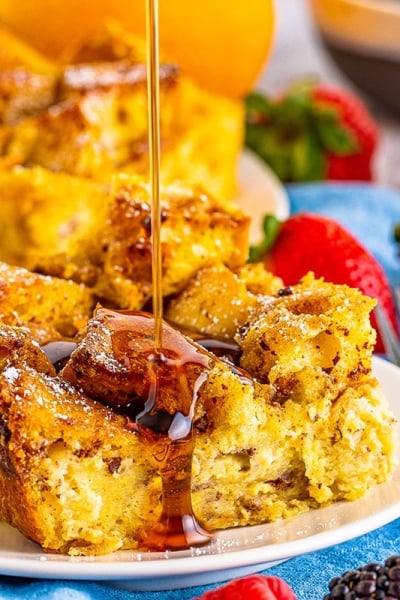
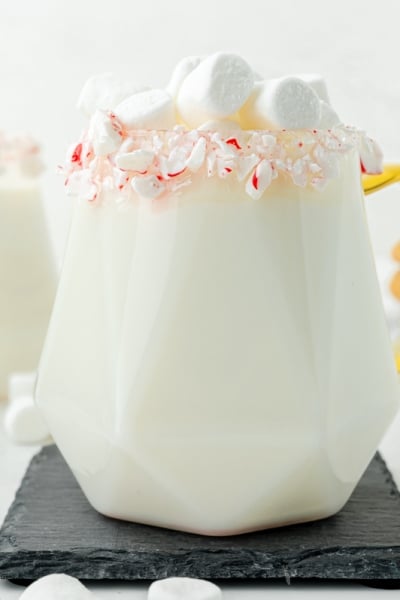
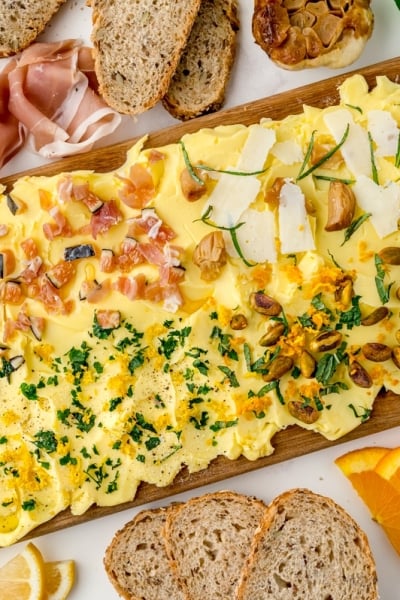
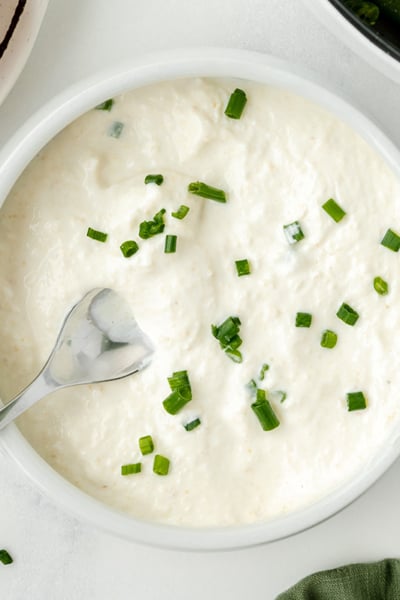













Thank you so much for this easy to follow recipe and very informative! I just tried it and it turned out so good! Thanks!
Focaccia with garlic is next-level delicious. This is perfect for the summer and great for picnics too.
This recipe is well explained and so doable. I made it and came out so good. Will make it again.
Actually have made it 3 times and it is delicious! And oh so easy! The only thing I do differently is cover it loosely with plastic wrap instead of a towel. Mine dryed out on top.
Thanks for that feedback and glad you loved it! I just did some recipe testing and will be changing it slightly, but I’ll put the original recipe in the notes section.
This came out too heavy and dense for me, probably because of the large amount of flour that’s used.
Hi Christy, I am sorry to hear you felt that way. Focaccia is a pretty dense and heavy bread. Maybe try a ciabatta? A little more light and fluffy?
I made this and is was so yummy!! Can the dough be stretched out in a larger flat pan so it will come out thinner? Thanks for a great recipe!
Thank you! It sure can- but it might change the cooking times depending on how thin you stretch it, so watch carefully.
Love this recipe!! I have made it several time now 🙂
Woohoo! Love to hear that!
The ingredients list calls for fresh rosemary, but it’s not listed in any part of the instructions. Is this supposed to be sprinkled on the bread before baking, like the oregano, or after baking? Or mixed into the dough? Thanks
Hi Sharon! Thanks for pointing that out. It is sprinkled on top- I just added it to the instructions. Enjoy!
I like my bread a crusty on the outside. If I bake it longer will it really dry out? Also, does this recipe yield thick enough bread to slice in half to make sandwiches? Thank you!
Hi Craig, thanks for stopping by! If should overly dry out- the top will be slightly hard and making a hallow knocking sound if tapped with a wooden spoon. If the yeast rises properly, it should be thick enough to slice in half for a sandwich. The bread slices will be about 1/2-ish thick. I bake it in a 9×13 glass dish and the top rises to the top of the dish, which is about 1 inch tall. Hope that helps!
Just made this for the first time today…..OMG, it is so good. Can’t wait to make it again to use for pressed italian sandwhiches.
I”m so glad to hear that! It warms my heart when people stop by to tell me how well a recipe turned out.
Omg!!! My house smells amazing right now!! Thank you for this delicious focaccia recipe!! Can’t wait to dig in!!
Awesome!!! So glad you love it!